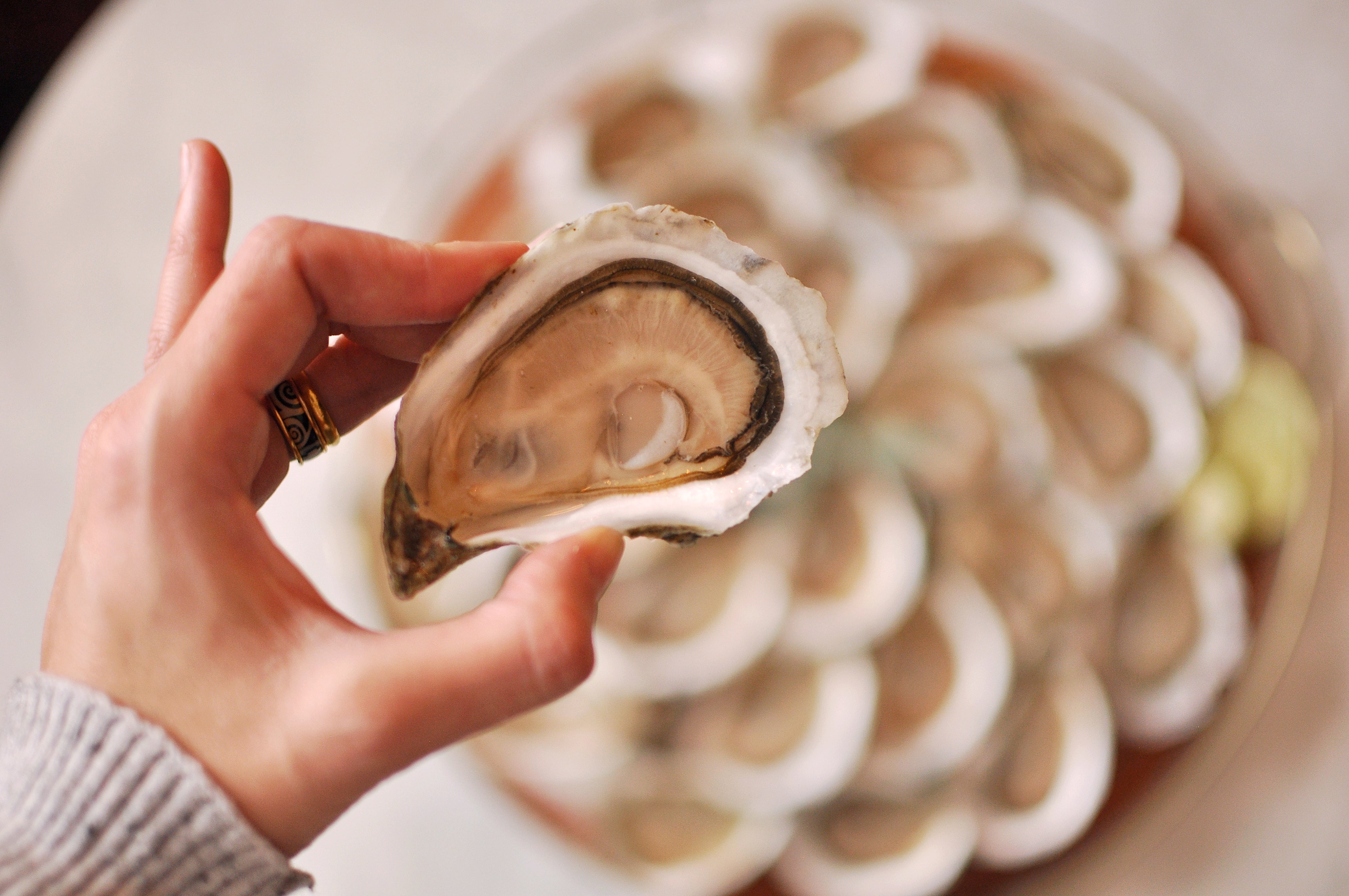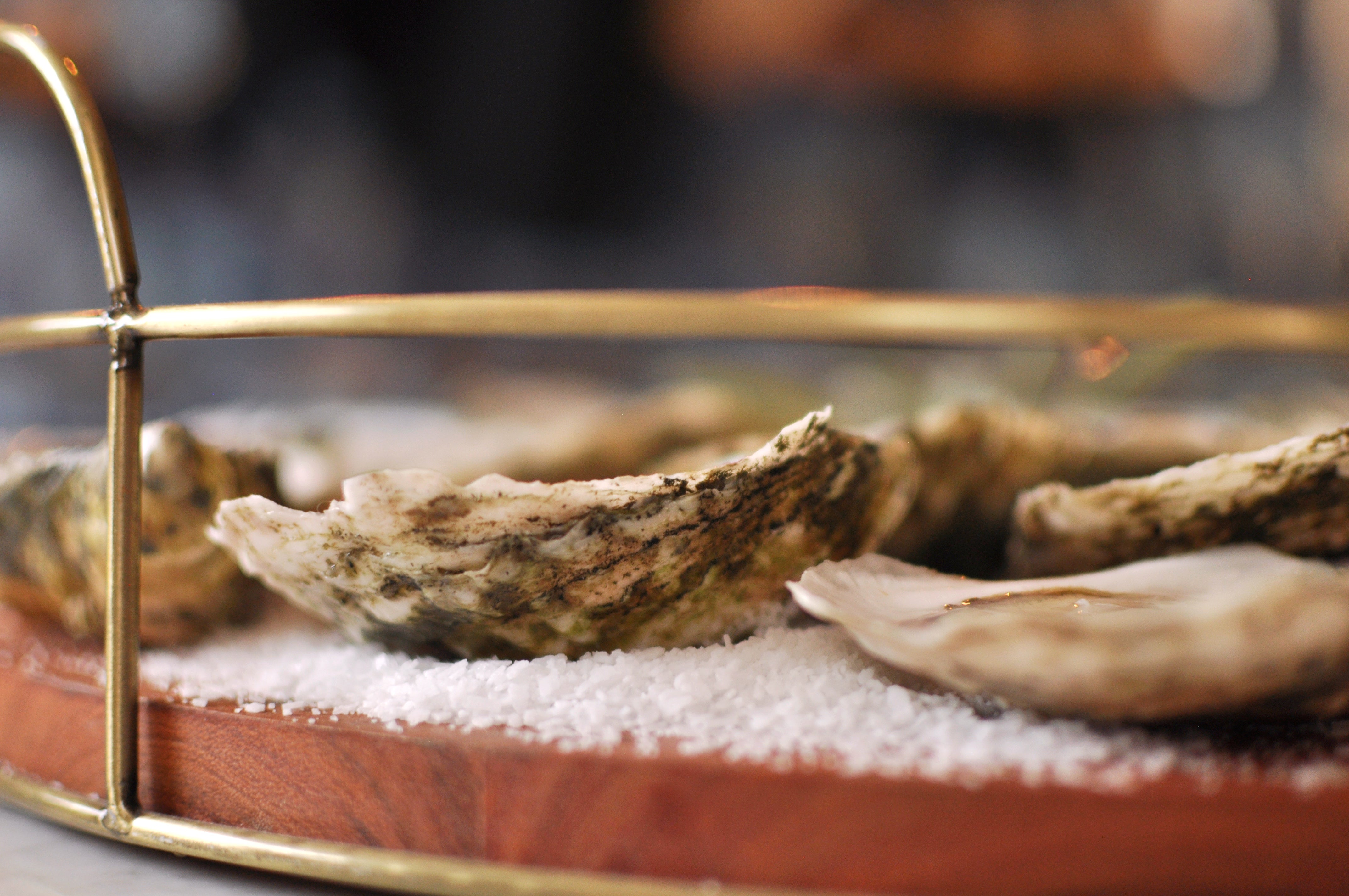TASTE

See
Take a moment to notice an oyster’s meat-to-shell ratio, texture, depth of their cups, and ruffled edges in comparison to their neighboring oysters on your tray. Most importantly, notice the quality of the shuck. An oyster without any punctured meat is critical in experiencing the oyster at its best.
In America, oysters should arrive to your table with the bottom adductor severed from its shell, but you can always double-check the with a slight push of the oyster with a cocktail fork.
In Europe and Asia, oysters may still be attached, which is a norm that implies their freshness. You should feel comfortable taking your fork and severing the adductor on your own, with a slight push or scoop of the oyster.
It’s recommended that you smell an oyster before you eat it. Make sure it smells like an afternoon at the beach. It should evoke salty, vegetal, or floral aromas. I love how an oyster’s shell, like a wine glass, already provides a natural shape to embrace an oyster’s bouquet!
Any potent odor is a sign that the oyster may be past its prime, so this step is extremely important when consuming raw food.

Sip
Once your oyster has passed the sniff test, it’s time to pick up the shell. I always recommend trying two or three oysters of each variety whenever possible to ensure you’re experiencing a consistent profile. Lift the shell and sip a tiny amount of oyster liquor first. Let the brine linger on your tongue. The initial lift of salt should awaken your palate like a strong cup of coffee. You may experience some initial characteristics of seagrass, pepper, melon, or mushroom flavors. The mouth feel should energize and excite your tastebuds before the slurp.

Slurp
It’s the moment you’ve been waiting for! Go in for the full oyster, lifting the shell at a 45-degree angle and letting it slide into your mouth. An oyster should always be slurped in its full form directly from the shell, liquor included. It is frowned upon to pick up the oyster from the shell with a fork, or to dollop an obscene amount of lemon or mignonette before initially trying them raw.
Don’t forget to CHEW. Revel in the gusher-like burst of ocean flavors by biting the oyster itself. That’s right—no swallowing whole! The body contains meaty, nutty, buttery, and earthy notes all on their own and should not be missed. The adductor muscle, the oyster’s cylindrical center, is the sweet finale.
End your experience with a cathartic appreciation for place and purpose!

Study
Once the slurp is over, it is customary to return the shell upside down onto the ice. This is a signal to your server that communicates you are finished, but also gives you the chance to admire the oyster shell’s characteristics.
Oyster shells are a chaotically formed and concentrically shaped, which reflects their species and growth location. Their ridges, size, age, position in the water column, and algae consumption can all be identified by their shells. Look for uniformity in these attributes from each oyster variety. This is a sign that their farmers are committed to quality and consistency.

